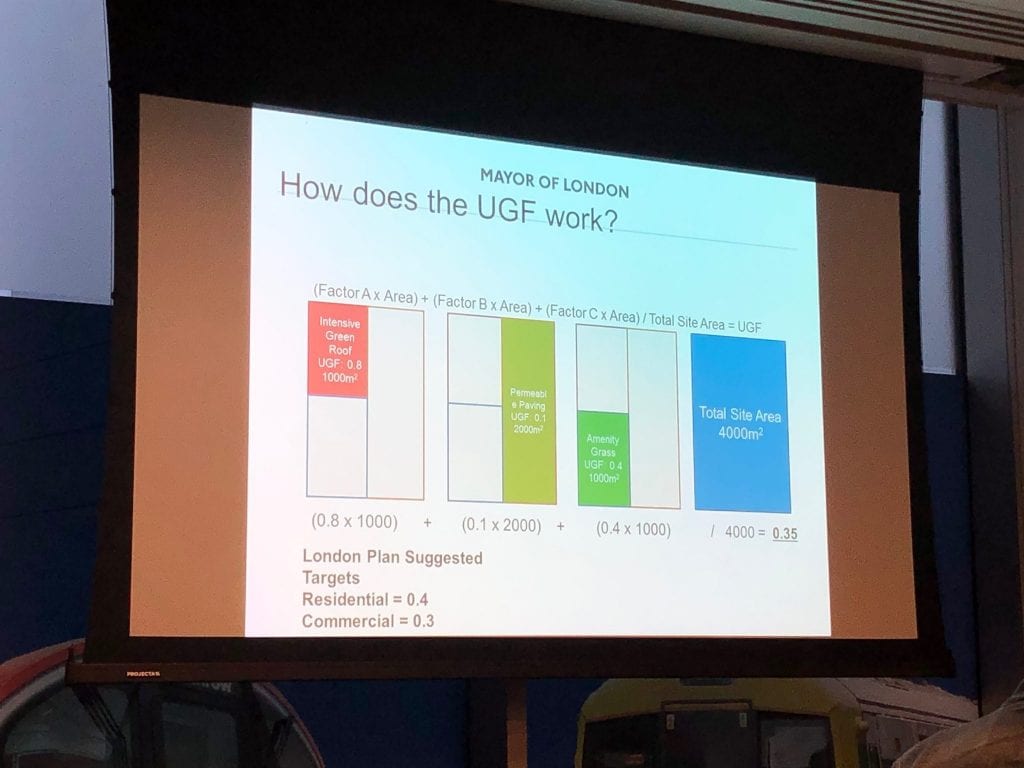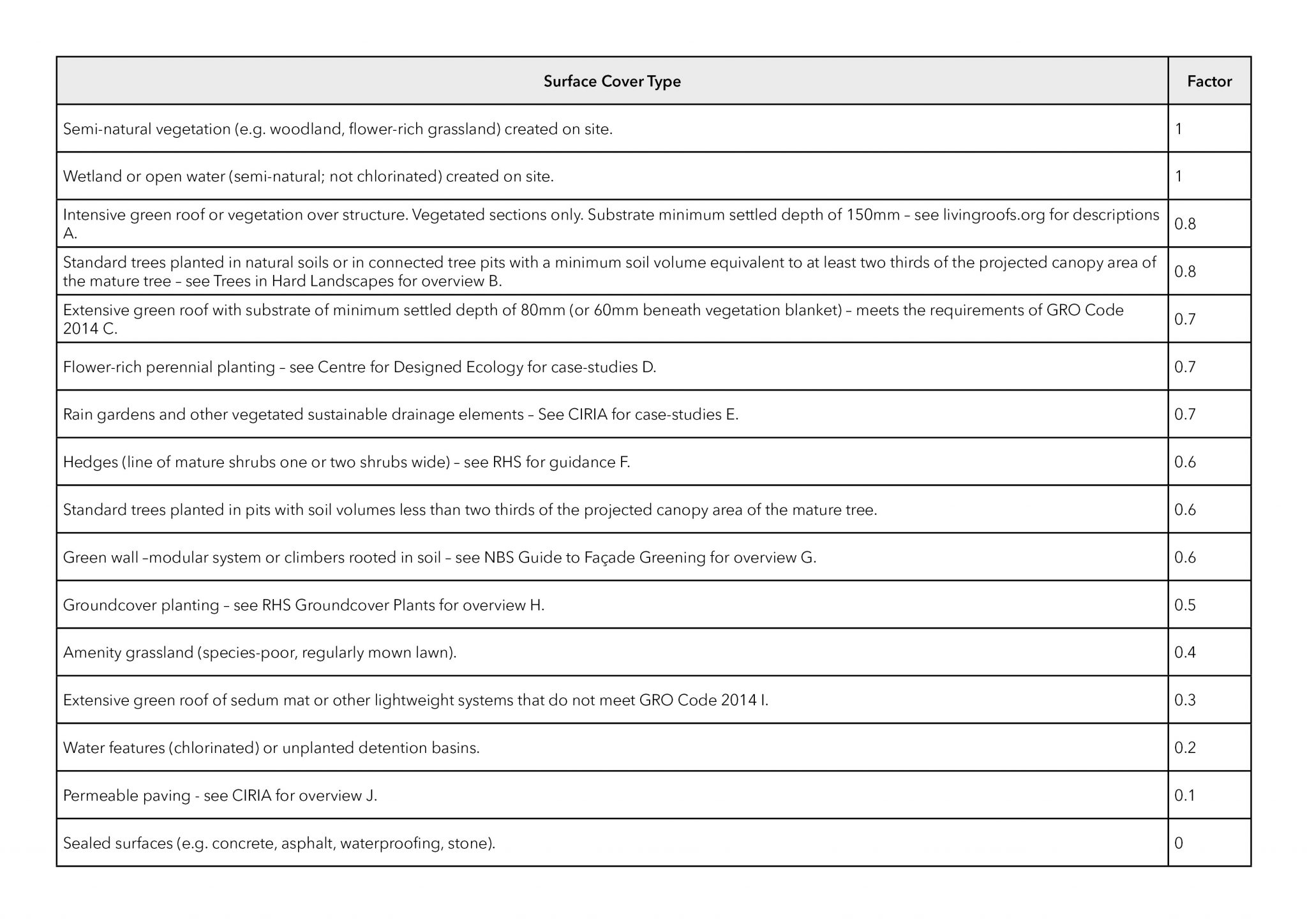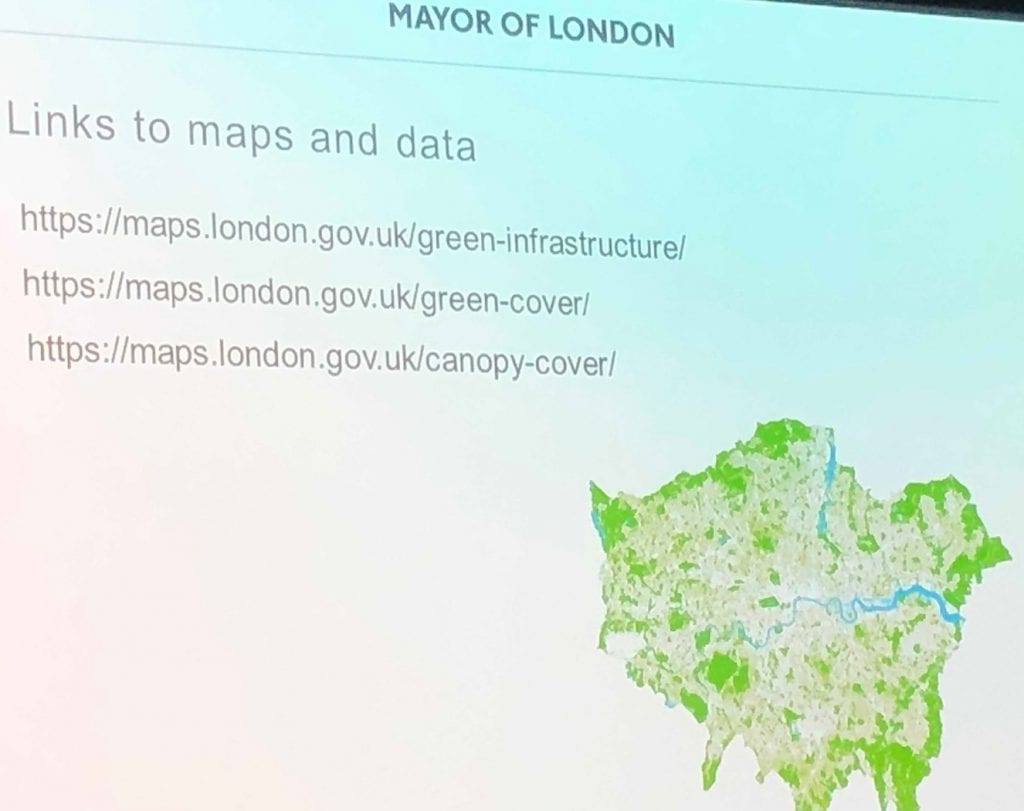The Urban Greening Factor has been introduced as part of The London Plan and provides an easily accessible means by which local authorities can score the merits of various green infrastructure and SuDs interventions across the urban environment. Covering a wide range of options including, but not limited to, street trees, green roofs, green walls, and rain garden. In those cities where they have been adopted, UGF schemes have been shown to increase the amount of green space within developments, as well as increasing multifunctionality, particularly with respect to surface water drainage. UGF schemes may also have the aim of requiring developers to take specialist advice (usually from landscape architects) in order to ensure that their plans meet requirements.

London is not the only city to have utilised these principles but the fundamental principles remain the same. All schemes allocate a factor to various types of surface cover included in planning proposals. The factors are a simplified measure of the various benefits provided by soils, vegetation and water, and are usually assigned on the basis of potential for rainwater infiltration. This is because the water-holding capacity of surface cover and associated soil is an indicator of their ‘naturalness’ and their ability to provide the range of benefits in relation to health, climate change adaptation, air quality improvement and biodiversity conservation.
A recent event hosted by Urban Design London as sponsored by GreenBlue urban “Applying the Urban Greening Factor” discussed the available tools for local authority planners to enable “green” urban design choices to meet local needs.
The morning was led by the wonderful Peter Massini from the Greater London Authority along with Abby Crisostomo and Samantha Davenport from the GLA’s Green Infrastructure Team. The sold-out event entailed a workshop event by which attendees learnt how to apply the UGF policy to a variety of development scenarios.

The Urban Greening Factor for a proposed development is calculated in the following way: (Factor A x Area) + (Factor B x Area) + (Factor C x Area) etc. divided by Total Site Area
Factors between 0 and 1 (in increments of 0.1) are allocated to each surface cover type, with impermeable surfaces such as concrete and asphalt assigned a factor of 0 and the most natural surface cover such as open water or trees on deeper soils, given a factor of 1.

So, for example, an office development with a 600 sqm footprint on a site of 1,000 sqm including a green roof, 250 sqm car parking, 100 sqm open water and 50 sqm of amenity grassland would score the following; (0.7 x 600) + (0.0 x 250) + (1 x 100) + (0.4 x 50) / 1000 = 0.54

So in this example, the proposed office development exceeds the interim target score of 0.3 for a predominately commercial development under part B of Policy G5 Urban greening.
This use of greening factor provides an excellent opportunity to score trees on developments based on soil volume and size of pit, to distinguish between good and bad tree planting methodologies and to truly assess the benefits different approaches to integrating trees provide to each scheme of whatever scale.
So what is the future for such a tool and can this help London’s urban forest?
The value of the Green Factor or any other tool lies in the flexibility and adaptability of the system implemented and the dialectic between specific and generalist aims. Whilst green areas can be realised and supported by using the tool, it is up to the designers and developers to find cost-effective ways of meeting these targets.

Multifunctional tree pit systems with correct soil volume, use of uncompacted soil and an ability to marry up tree planting and SUDs provide part of a suite of solutions for achieving this objective. One of the biggest challenges in using a tool such as the Green Factor is establishing a common baseline for its use. If the Green Factor is to overcome these difficulties, the target score should be set high enough to effectively force the developers to include novel green elements in their selection. To date, no clear criteria have been developed to determine the success of such tools with no academic studies to follow up the implementation of UGF approaches globally.

